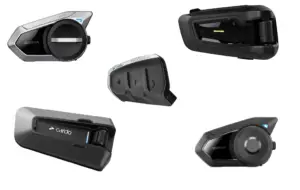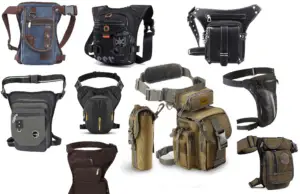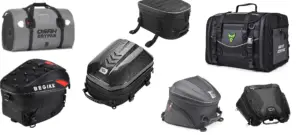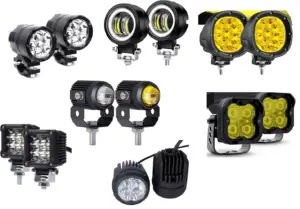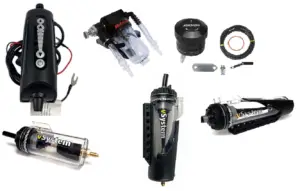Here is a list of 11 Top Midweight adventure bikes that:
1. have an engine displacement of 600-1000cc,
2. have 19-21 inch front wheel installed,
3. have capable suspension setup for courageous riding on gravel roads.
Contents
#1 BMW 850GS/A
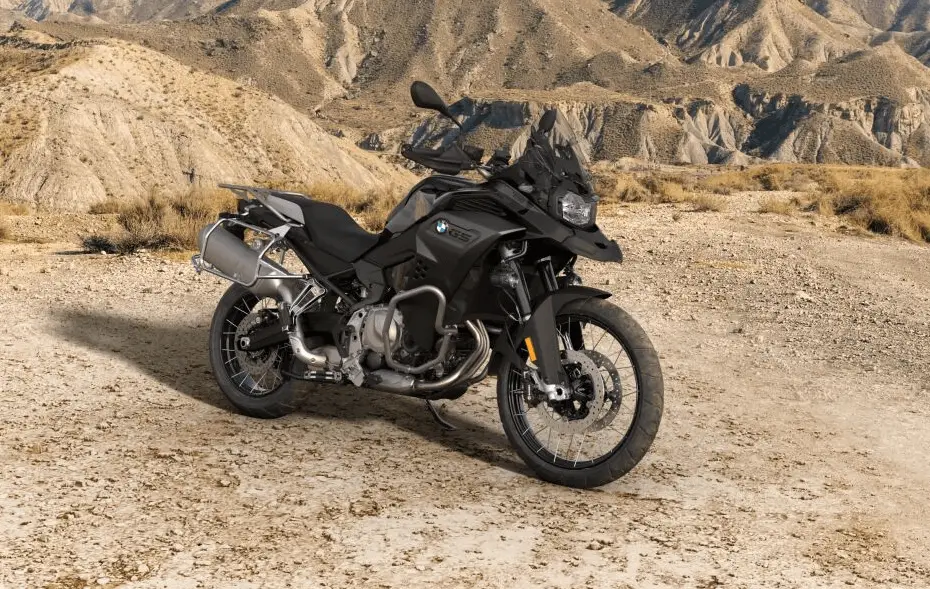
- Engine: 853cc, 2-cylinder, liquid-cooled, DOHC, 270° crank
- Compression ratio: 12.7:1
- Power: 90 hp @ 8000 rpm / 86 N⋅m @ 6250 rpm
- Front Suspension: 230mm, not adjustable
- Rear Suspension: 215mm, electronic preload adjustment
- Ground Clearance: 248 mm
- Wheels Front/Rear: 21/17 tubeless
- Wet Weight: 244 kg / (538 lb)
- Fuel Consumption (According to Fuelly): 4.2 l/100km / 56 MPG (US)
- Tank Capacity/Range: 23L / 550 km
- Final Drive: Chain
- Cruise Control: ✅ Yes
Unique Features
✅ BMW F850GSA is probably the best midweight adventure bike on this list if you check the specs. Its biggest con is its weight but it wasn’t designed to be particularly good offroad.
It has all electronics including cruise control. It can go on gravel roads all day long. It has an amazing tank range, great power, and low fuel consumption. Ground clearance is there.
BMW can further improve by adding more adjustability to the fork but overall the bike has it all.
#2 Moto Guzzi V85TT
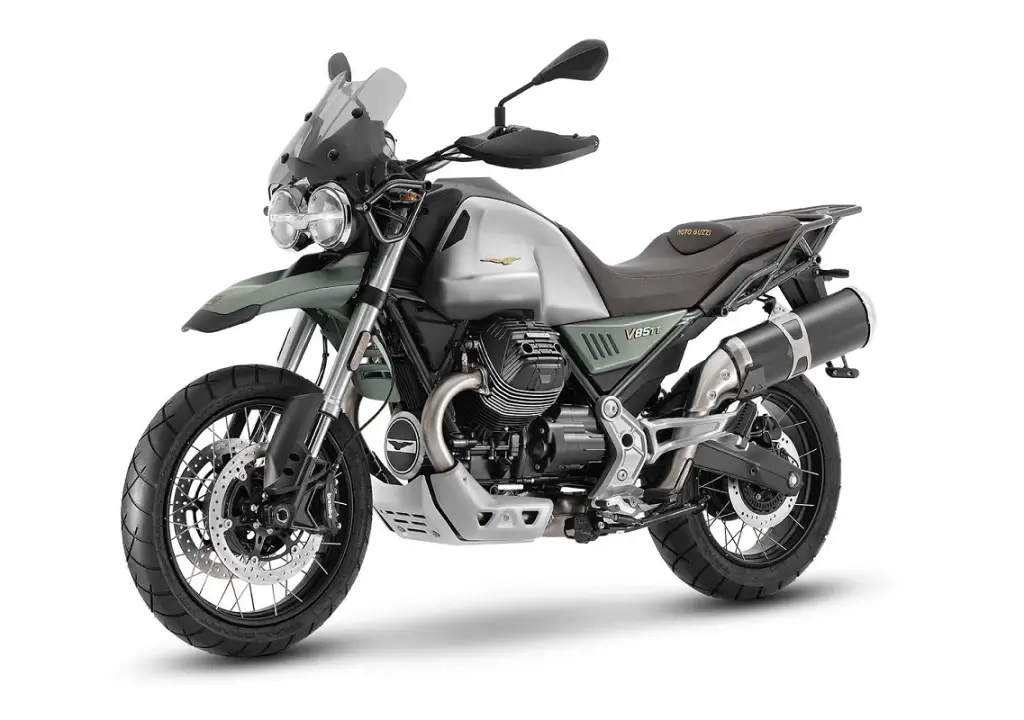
- Engine: 853cc, 2-cylinder, air-cooled, 2-valve rocker arms, V-twin
- Compression ratio: 10.5: 1
- Power: 80 hp @ 7750 rpm / 80 N⋅m @ 5,000 rpm
- Front Suspension: 170 mm preload and rebound adjustment
- Rear Suspension: 170 mm preload and rebound adjustment
- Ground Clearance: 210 mm
- Wheels Front/Rear: 19/17 tubeless
- Wet Weight: 229 kg / (505 lb)
- Fuel Consumption (According to Fuelly): 4.5 l/100km / 52 MPG (US)
- Tank Capacity/Range: 23L / 510 km
- Final Drive: Shaft Drive
- Cruise Control: ✅ Yes
Unique Features
✅ SHAFT DRIVE – V85TT is the only midweight adventure bike with a shaft final drive. This means no chain maintenance resulting in less hustle and more riding.
✅ AIR COOLED – Only air-cooled engine in this list. Usually, I prefer liquid-cooled engines. However, V85TT has cylinders sticking on the sides resulting in a lot of ongoing air and efficient air cooling. Moreover, V85TT has a long-stroke engine further improving heat dissipation across larger cylinder wall area and giving its engine a unique character with lots of low-end torque.
✅ RETRO LOOKS – V85TT does stand out in front of other adventure bikes with its high fender, vintage headlight design, and naked design.
The only con is that it gets dirty pretty fast since there are no fairings near the wheels and dirt quickly sticks to the engine. I would buy an additional aftermarket low fender for the front wheel and a hugger for the rear wheel to keep the bike cleaner for longer periods.
#3 Aprilia Touareg 660
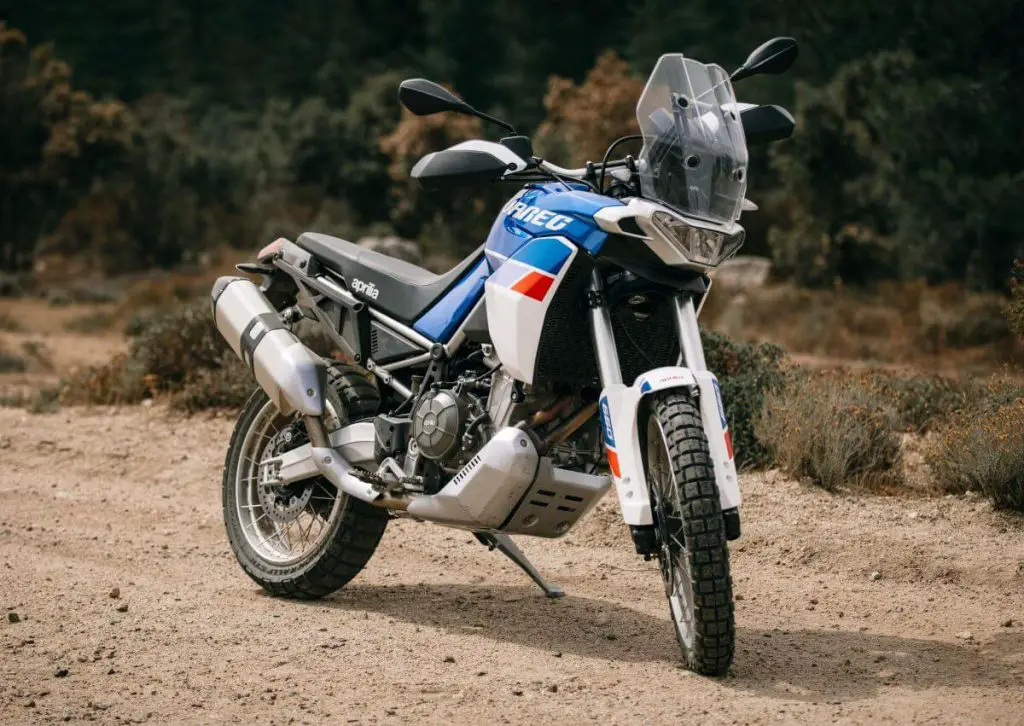
- Engine: 659cc, 2-cylinder, liquid-cooled, DOHC, 270° crank
- Compression ratio: 13.5:1
- Power: 80 hp @ 9250 rpm / 67 N⋅m @ 8500 rpm
- Front Suspension: 240mm travel, fully adjustable
- Rear Suspension: 240mm travel, fully adjustable
- Ground Clearance: 240mm
- Wheels Front/Rear: 21/18 tubeless
- Wet Weight: 204 kg / (450 lb)
- Fuel Consumption (According to Fuelly): 4.0 l/100km / 58 MPG (US)
- Tank Capacity/Range: 18L / 450km
- Final Drive: Chain
- Cruise Control: ✅ Yes
Unique Features
✅ CRUISE CONTROL – Touareg 660 is the only under 700cc adventure bike that has cruise control.
✅ SUSPENSION TRAVEL – Touareg 660 has the largest suspension travel at 240mm
✅ Best Offroad Potential based on specs – The biggest Touareg 660 Competitor is the Yamaha Tenere 700. Both bikes have similar engine displacements, engine configurations, and weight. However, Touareg comes equipped with electronic throttle, cruise control, and tubeless wheels. Also, Touareg has lower fuel consumption resulting in a bigger tank range.
The only con is that Touareg is more expensive compared to Tenere.
#4 Husqvarna Norden 901
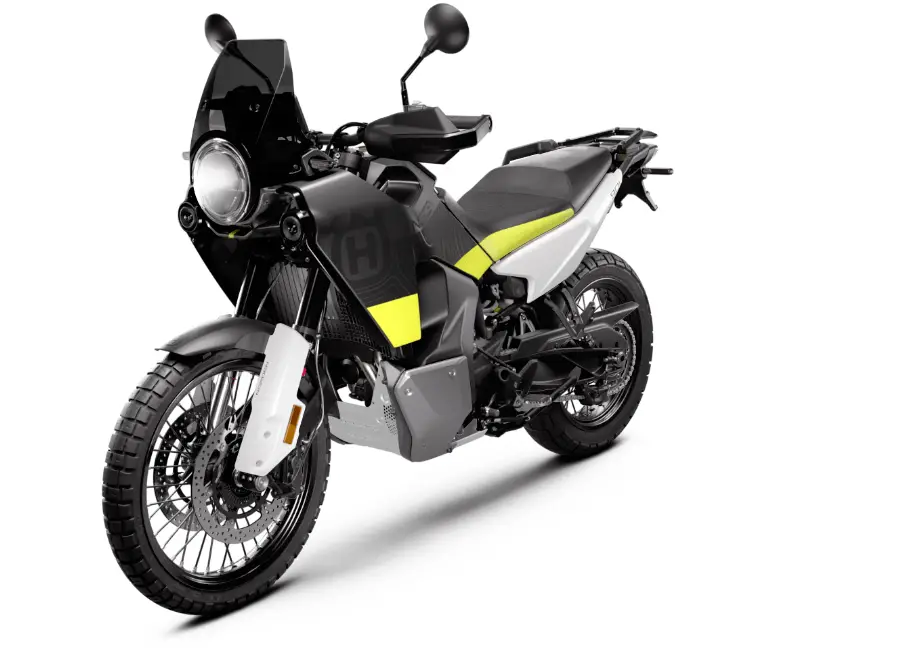
- Engine: 889 cc, 2-cylinder, liquid-cooled, DOHC, 270° crank
- Compression ratio: 13.5:1
- Power: 105 hp @ 8000 rpm / 100 N⋅m @ 6500 rpm
- Front Suspension: 220 mm fully adjustable
- Rear Suspension: 215 mm preload and rebound damping
- Ground Clearance: 252 mm
- Wheels Front/Rear: 21/18 tubeless
- Wet Weight: 217 kg / (478 lb)
- Fuel Consumption (According to Fuelly): 4.5 l/100km / 52 MPG (US)
- Tank Capacity/Range: 19 / 420 km
- Final Drive: Chain
- Cruise Control: ✅ Yes
Unique Features
✅ Low tank located down on the engine sides same as KTM 890. This results in more weather protection for legs, especially in wet weather conditions.
✅ KTM engine – The engine is from KTM 890 adventure.
So basically this is a KTM motorcycle with different fairing, visual design, different aerodynamics, headlight, and wind protection. The biggest con is that the air filter is located under the rear seat, it is easily accessible, however it does collect a lot of dust lifted by the rear wheel on gravel roads.
#5 Suzuki Vstrom 800
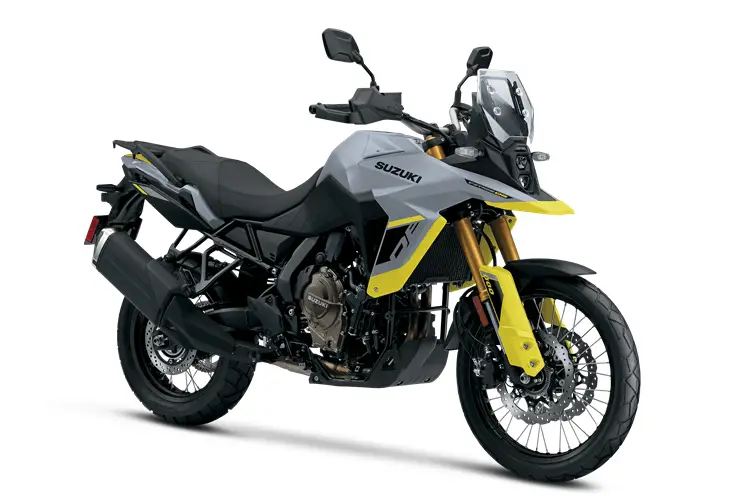
- Engine: 776cc, 2-cylinder, liquid-cooled, DOHC, 270° crank
- Compression ratio: 12.8 : 1
- Power: 84 hp @ 8500 rpm / 78 N⋅m @ 6800 rpm
- Front Suspension: 220mm travel fully adjustable
- Rear Suspension: 220mm travel fully adjustable
- Ground Clearance: 220mm
- Wheels Front/Rear: 21/17 tube type
- Wet Weight: 230 kg / (507 lb)
- Fuel Consumption (According to Fuelly): 4.4 l/100km / 54 MPG (US)
- Tank Capacity/Range: 20L / 450km
- Final Drive: Chain
- Cruise Control: ❌ No
Unique Features
✅ Suspension is the same SHOWA setup as on Africa Twin. We waited so long for Honda to make a smaller capacity Africa Twin that SUZUKI decided to create one.
✅ Smooth engine – Suzuki added 2 balancer shafts and made the engine long-stroke in combination with a 270-degree crank. I feel like this engine character is somewhere between Africa Twin and Yamaha Tenere 1200, but with lower power due to lower displacement. In my opinion, this is the best engine for long-distance touring in the Midweight adventure bike category. Such a shame that Suzuki did not add cruise control.
#6 KTM 890 Adventure
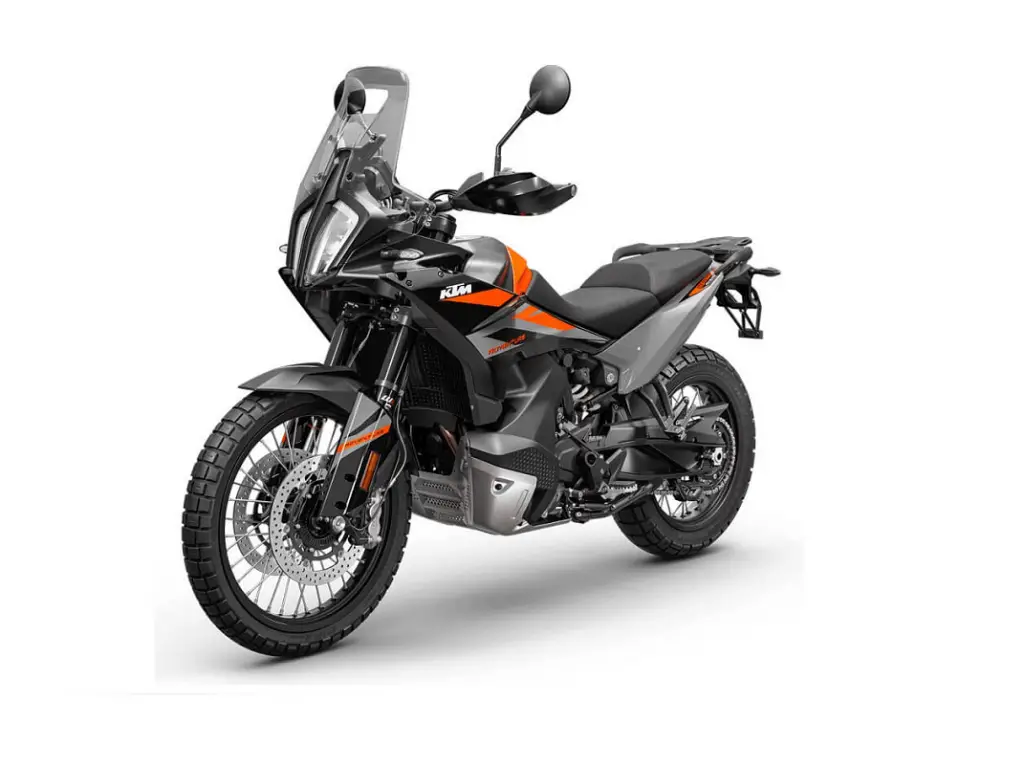
- Engine: 889cc, 2-cylinder, liquid-cooled, DOHC, 270° crank
- Compression ratio: 13.5:1
- Power: 105 hp @ 8000 rpm / 100 N⋅m @ 6500 rpm
- Front Suspension: 200mm fully adjustable
- Rear Suspension: 200mm fully adjustable
- Ground Clearance: 233mm
- Wheels Front/Rear: 21/18 tubeless
- Wet Weight: 210 kg / (463 lb)
- Fuel Consumption (According to Fuelly): 4.5 l/100km / 52 MPG (US)
- Tank Capacity/Range: 20L / 445km
- Final Drive: Chain
- Cruise Control: ✅ Yes
Unique Features
✅ Tank located low on the sides – Such low fuel positioning results in the lower center of mass. Secondly, the fuel tank provides weather protection for the legs. For example, on other bikes, the dirt raised by the front wheel gets directly onto the feet making shoes wet very fast. Thirdly, fuel does not slap into the sides of the tank as much as with a classic fuel tank during offroad riding.
#7 Ducati DesertX
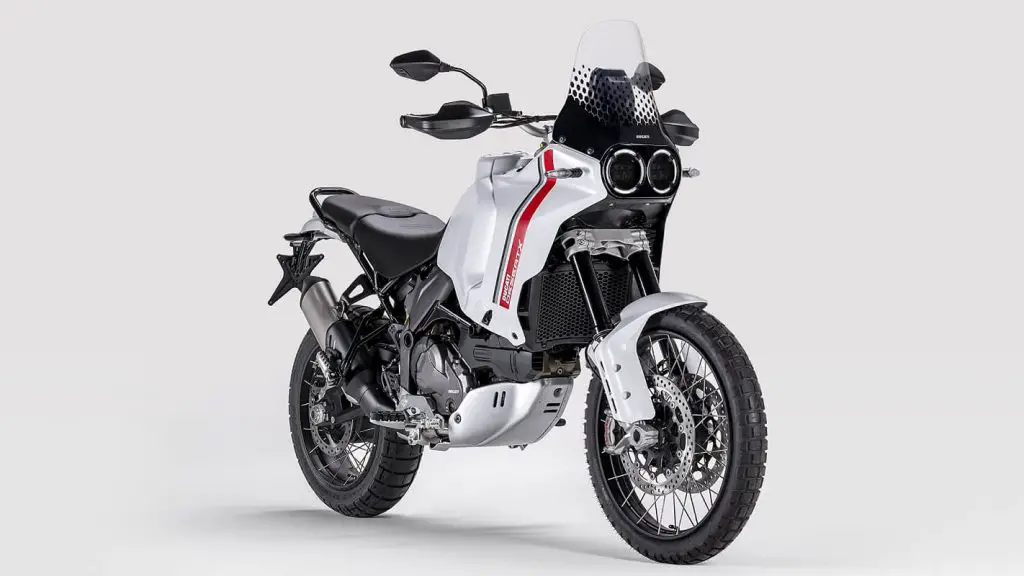
- Engine: 937cc, 2-cylinder, liquid-cooled, DOHC, 90° L-Twin
- Compression ratio: 13.3:1
- Power: 110 hp @ 9250 rpm / 92 N⋅m @ 6500 rpm
- Front Suspension: 230mm fully adjustable
- Rear Suspension: 220mm fully adjustable
- Ground Clearance: 250mm
- Wheels Front/Rear: 21/18 tubeless
- Wet Weight: 223 kg / (492 lb)
- Fuel Consumption (According to Fuelly): 5.6 l/100km / 42 MPG (US)
- Tank Capacity/Range: 21L / 375km
- Final Drive: Chain
- Cruise Control: ✅ Yes
Unique Features
✅ The optional accessory rear tank – Ducati sells an additional 8-liter rear tank that increases total range by an additional 150 km making it 510 km in total.
✅ Self Stabilizing geometry Chassis – Due to the long wheelbase the bike is very forgiving on dirt and slippery surface. It is not as fast offroad as KTM, but in most adventure scenarios you are not racing anyway. Due to the long wheelbase, the turn of the front wheel has a smaller impact on displacing the rear wheel trajectory allowing for a more accurate handlebar input and more room for mistakes.
✅ Lowest Unsprung Mass – Ducati designed the front wheel setup to be lighter by using a thinner wheel axle and installing lighter Brembo calipers. Result – best handling 21-inch wheel on the pavement.
✅ Most Powerful engine in the Midweight adventure category with 110 hp. While the engine is the most powerful in the class, it also has the biggest fuel consumption at 5.6 liters which is pretty bad since it greatly reduces the range.
#8 Yamaha Tenere 700 World Raid
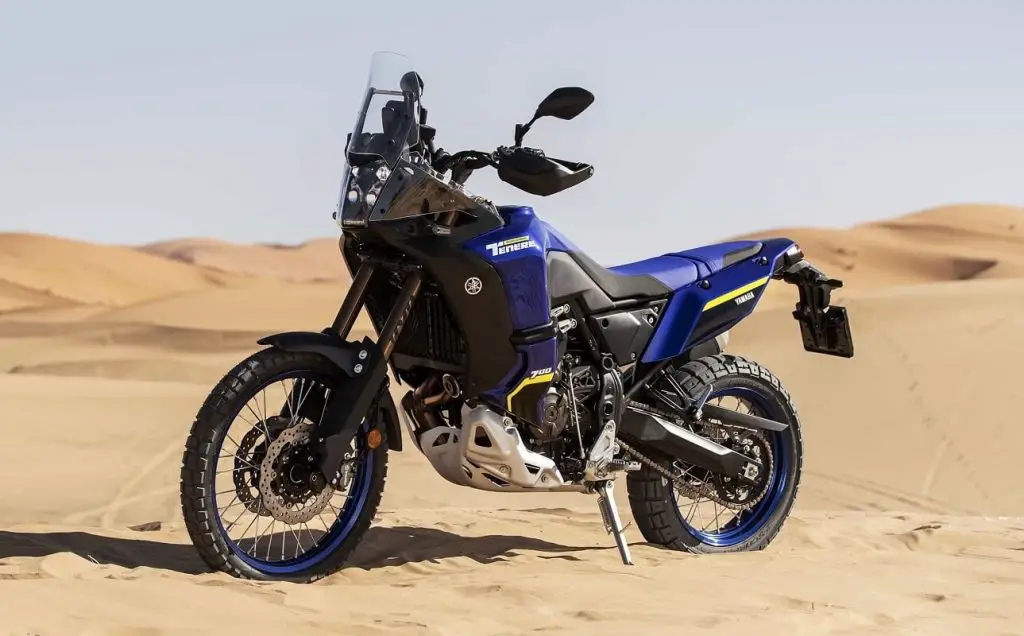
- Engine: 689cc, 2-cylinder, liquid-cooled, DOHC, 270° crank
- Compression ratio: 11.5:1
- Power: 72 hp @ 9000 rpm / 68 N⋅m @ 6500 rpm
- Front Suspension: 230mm fully adjustable
- Rear Suspension: 220mm fully adjustable
- Ground Clearance: 255 mm
- Wheels Front/Rear: 21/18 tube type
- Wet Weight: 220 kg / (485 lb)
- Fuel Consumption (According to Fuelly): 4.3 l/100km / 55 MPG (US)
- Tank Capacity/Range: 23L / 535km
- Final Drive: Chain
- Cruise Control: ❌ No
Unique Features
✅ The Tenere 700 comes in 3 specs for 2023. The World Raid spec has the biggest tank and a nicer color TFT dash. A bigger tank provides additional wind protection for legs and the 530km range is very convenient for adventure touring. The biggest con is that bike is still not equipped with electronic throttle and there is no cruise control. Tenere is back to basics adventure bike after all.
#9 Triumph Tiger 900GT / PRO
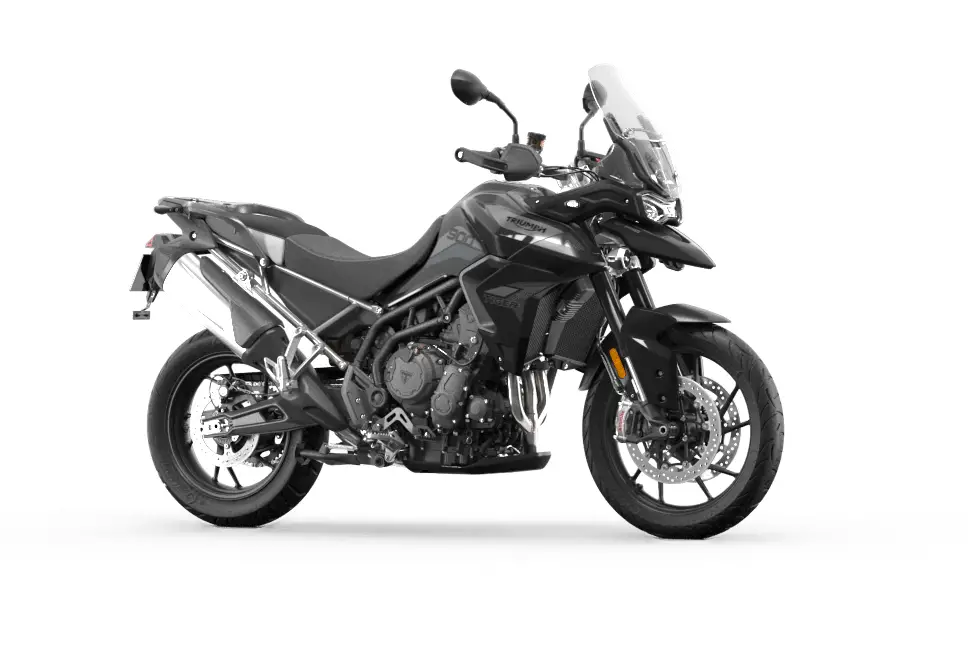
- Engine: 888cc, 3-cylinder, liquid-cooled, DOHC, T-crank
- Compression ratio: 11.27:1
- Power: 94 hp @ 8750 rpm / 86 N⋅m @ 7250 rpm
- Front Suspension: 180 mm rebound and compression adjustment
- Rear Suspension: 170 mm fully adjustable
- Ground Clearance: 180mm
- Wheels Front/Rear: 19/17 tubeless
- Wet Weight: 226 kg / (498 lb)
- Fuel Consumption (According to Fuelly): 5.2 l/100km / 45 MPG (US)
- Tank Capacity/Range: 20L / 380km
- Final Drive: Chain
- Cruise Control: ✅ Yes
Unique Features
✅ 3 cylinders – Triumph is the only adventure bike with 3 cylinders. Most bikes come with either 2 o 4 cylinder engines. The 3-cylinder engine has long and linear power delivery. You can ride 90 kph in 3rd gear or in 6th and the engine will do its job without hustle in both cases. This is a very fun engine for twisties.
✅ T-crank – Triumph engine torque fits between a modern 270° crank and a more conventional 180°. T-crank offers more torque at low revs compared to 180° crank but less than 270° crank. And yes, I know that a 3-cylinder engine can not have a 180° or 270° crank – it is just a way to explain engine character.
❌ The biggest con is big fuel consumption considering engine displacement and power. This leads to a smaller tank range when compared to other adventure bikes. Also, some riders report vibrations at 120 kph which is a big problem if you want to cover some distance on a highway.
#10 CFMOTO 800MT Touring
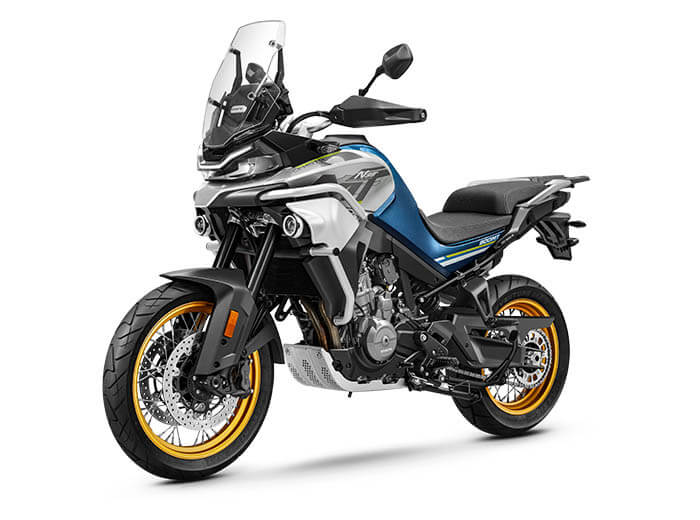
- Engine: 799cc, 2-cylinder, liquid-cooled, DOHC, 285°-crank
- Compression ratio: 12.7:1
- Power: 90 hp @ 9250 rpm / 75 N⋅m @ 8000 rpm
- Front Suspension: 160mm fully adjustable
- Rear Suspension: 150mm not adjustable
- Ground Clearance: 190 mm
- Wheels Front/Rear: 19/17 tubeless
- Wet Weight: 231 kg / (509 lb)
- Fuel Consumption (According to Fuelly): 4.4 l/100km / 54 MPG (US)
- Tank Capacity/Range: 19L / 430km
- Final Drive: Chain
- Cruise Control: ✅ Yes
Unique Features
✅ KTM engine – CFMoto is a China-based company that bought the right to manufacture and use the KTM 790 engine. The engine got retuned for the EURO 5 standards resulting in slightly less horsepower and torque numbers.
❌ Suspension – budget suspension with low travel and a relatively high weight of 231 kg.
#11 Honda TransAlp XL750
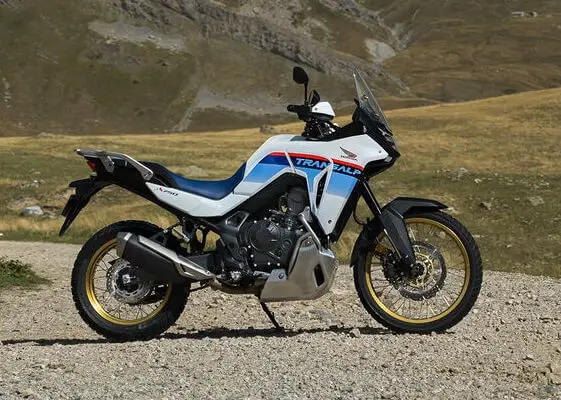
- Engine: 755cc, 2-cylinder, liquid-cooled, UNICAM, 270° crank
- Compression ratio: 11.0:1
- Power: 90 hp @ 9500 rpm / 75 N⋅m @ 7250 rpm
- Front Suspension: 200mm Not adjustable
- Rear Suspension: 190mm Preload adjustment only
- Ground Clearance: 210mm
- Wheels Front/Rear: 21/18 tube type
- Wet Weight: 208 kg / (458 lb)
- Fuel Consumption (According to Fuelly): 4.35 l/100km / 54 MPG (US)
- Tank Capacity/Range: 16.9L / 388km
- Final Drive: Chain
- Cruise Control: ❌ No
Unique Features
❌ Honda has chosen the conservative approach. There is nothing unique that would make Honda stand out. On paper, this is the worst bike on this list. Honda did not even add their DCT (Dual Clutch Transmission) as an option. The bike has tube-type wheels, the worst rear shock that they took from CB500x, no cruise control, and a small tank.
Overall, the engine is good as any other honda engine, but the chassis falls behind other competitors. It looks like Honda was afraid that this bike would steal some sales from their bigger flagship Africa Twin and they worsened TransAlp XL750 on purpose. I would go for a Vstrom 800 instead of TransALP despite its higher weight.
Verdict
All bikes have their pros and cons.
I would go for a BMW F850GSA as an all-rounder.
Choose V85TT if I wanted a shaft drive instead of a chain.
Tenere 700 is a budget offroad version.
Then there is Touareg 660, KTM 890, and NORDEN 901 if you want to go offroad and still get a decent electronics package with cruise control.
Ducati DesertX is in its own class and while being amazing offroad it is also the best road touring bike for twisty roads in this class.
And more road-focused budget option includes Vstrom 800.
I would consider TransALP XL750 only if they would add a DCT version.
I wouldn’t choose CFMoto 800 Touring due to budget suspension and a high price tag.
Hope that covers it all. Choose your bike wisely, and remember that at the end of the day – the bike is just a tool.
